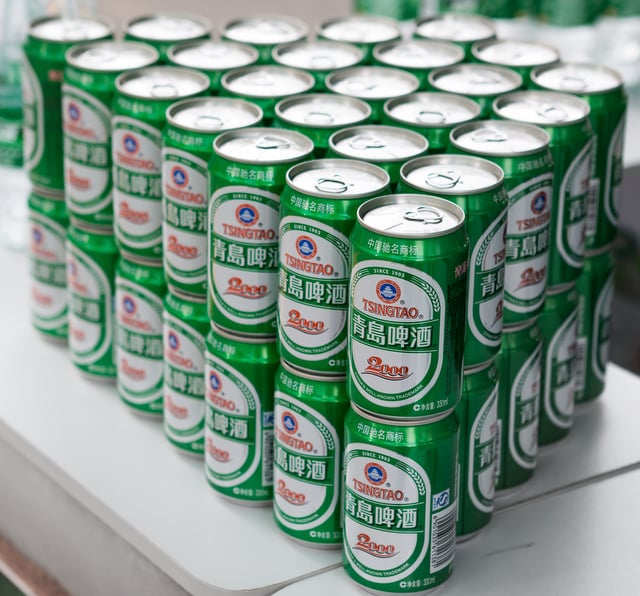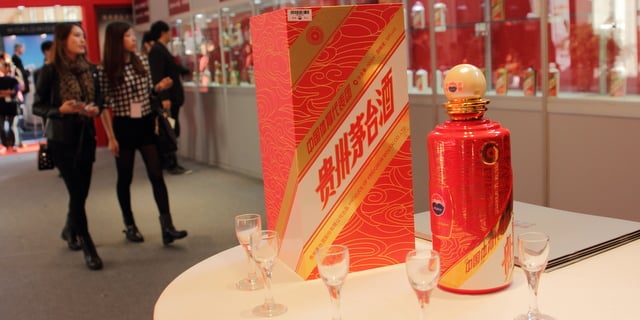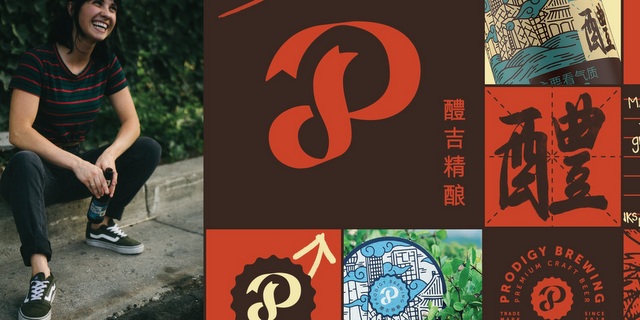
China has more than 1.3 billion people, so it only makes sense that China accounts for a quarter of the world’s beer volumes. It is also a fierce and competitive market. According to this awesome Wall Street Journal article: In China, 70 percent of the market share is split among five robust competitors — CR Snow, Tsingtao Brewery Co., AB InBev, Beijing Yanjing Brewery Co. and Carlsberg A/S. CR Snow (officially China Resources Snow Breweries Ltd.) used to be a joint venture between China Resources Enterprise and multinational SABMiller, but in March of this year CR Snow bought out SABMiller for $1.6 billion and has become the market leader, owning between 23 to 25 percent of China’s market share depending on the year. Also China Resources is a state-owned enterprise.
This uniquely dispersed competitive landscape (consider that two companies rule 70 percent of the American market) has kept a tight lid on margins and made profits low for those big brands (this article explains it beautifully). In fact, beer is expected (at best) to register low volume growth in the near future in China (locals are crazy for the weirdness that is baijiu). But like the American market, the most interesting trend in Chinese beer has been the continual increase in volume sales of mid-priced and premium brands, and companies like CR Snow have launched higher end products to A) make more money and B) quench China’s growing demand for higher quality products.
Our question: Is there room for American craft beer in China?
New York’s Empire Farmstead Brewery thinks so. The Cazenovia-based brewing brand began shipping kegs of its Slo Mo IPA and White Aphro to China in August (the latter is a wit beer made with ginger and lavender). This month, it’s exporting four of its bottled beers: Slo Mo IPA, Skinny Atlas Light, East Coast Amber Ale and a collaboration brew (Two Dragons Ale, a tea-infused beer) made with the Chinese tea company, Jingwei Fu Tea. From an article on Syracuse.com.
Empire’s connection with China began in 2014, when Kaleski joined a trade delegation to that country sponsored by CenterState CEO, a local business development group. In addition to the Two Dragons Ale, Empire also embarked on a collaboration beer directly with China’s Panda Brew. That’s an herb-infused beer called Kuding-ta, which is currently brewed in China.
Empire Brewing last year hired Jing Zhang-Insel, a native of China, as its export specialist.
Empire’s Two Dragons Ale will be the focus, but Jing agrees that the Chinese market is ready for more American-style craft beers, like the hoppy Slo Mo, an India Pale Ale, or IPA.
It’s a super interesting sales strategy, as we’ve been watching how the Asian markets have really developed over the last few years (just look at Brooklyn Brewery in Japan). The Brewers Association reported that American craft beer exports topped $116 million in 2015, but most of that beer was going to Canada (51 percent of exports).
But Thailand and Taiwan were among the fastest growing markets in 2015 for American craft beer exports, and China has been hovering in the top 10 for some time; No. 6 in exports in 2013. For years the Brewers Association has seen growth potential in China, and last time we checked the BA’s Export Development Program had an office in Shanghai (read this article on their efforts).
Understanding China
Nationalism still plays a big part in Chinese buying habits, which makes Empire Farmstead Brewery’s choice of local business partners a clever move to gain respectability, but Asians are also craving imported products as well (they carry prestige).
Market leader CR Snow is state-owned, and the company is ultimately controlled by government thinking, so CR Snow has relied a lot on nationalism, targeting local celebrities to market and focusing on Snow variants instead of bringing in international brands (and analysts have been critical).
Economists and even our government see an interesting opportunity in the Chinese market for American beer (craft or otherwise), and remember that Budweiser is considered a premium brand in China (with about 2.6 percent share of the market), so finding the right beer style will be important.
Of course, the Chinese go bonkers for baijiu, which is basically sorghum liquor that tastes like sweaty socks, so perhaps more exotic beer styles might find a home in Asia, but beer sales (like everywhere else) usually soar during the hot summers in China, so lighter, more crushable styles with some local flavors (ginger, tea, swallow’s nest) might help your American craft product gain some traction in the biggest beer market in the world. For more info, we suggest you read this 2015 report on the Chinese beer market from the USDA Foreign Agriculture Service. We give a small excerpt below:
According to U.S. Brewers Association (BA), in 2013, U.S. craft beer exports to China reached 505,206 liters worth $1.15 million (FOB based). With an estimated growth of 30 percent by value, in 2014, it could reach $1.48 million.
With a proactive three-year market promotional plan, U.S. craft beer exports to China could have a year-on-year growth of 50 percent and reach an annual sale of $5 million by 2017. On an optimistic side, should the growth reach 100 percent, annual sales could be $12 million by 2017.
Such optimistic market outlooks are based on the below facts:
- China is the world’s largest beer producer and consumer; but its domestic beer production growth slows down and the market of mass-production beers is becoming saturated.
- Given continued growth of income, Chinese beer consumers pursue better quality and various flavors; therefore, imported beers, particularly those from Europe, are getting popular.
- Chinese consumers and even beer trade/bar&restaurant professionals lack of basic know-how about U.S. craft beer, which has a superior quality and more flavor options than European competitors.
Therefore, a well-planned comprehensive market promotion should be able to significantly raise brand image, increase product awareness and poise U.S. craft beer sales for a fast growth in China.





RT @CraftBrewingBiz: What’s the potential of the China craft beer market? NY’s @empirebrew to find out https://t.co/oMBkjyRQyz
What’s the Chinese craft beer market potential? Empire Farmstead to find out https://t.co/eWDxzmW8uR
Columbus Brew Adventures liked this on Facebook.
RT @CraftBrewingBiz: What’s the potential of the China craft beer market? NY’s @empirebrew to find out https://t.co/oMBkjyRQyz
RT @CraftBrewingBiz: What’s the potential of the China craft beer market? NY’s @empirebrew to find out https://t.co/oMBkjyRQyz
Todd Parker liked this on Facebook.
RT @CraftBrewingBiz: What’s the potential of the China craft beer market? NY’s @empirebrew to find out https://t.co/oMBkjyRQyz
RT @CraftBrewingBiz: What’s the potential of the China craft beer market? NY’s @empirebrew to find out https://t.co/oMBkjyRQyz
Shannon Long fyi
What is the potential of the Chinese craft beer market? Empire Farmstead Brewery going to find out https://t.co/ggCTjpSvm6 #beer #craftbeer